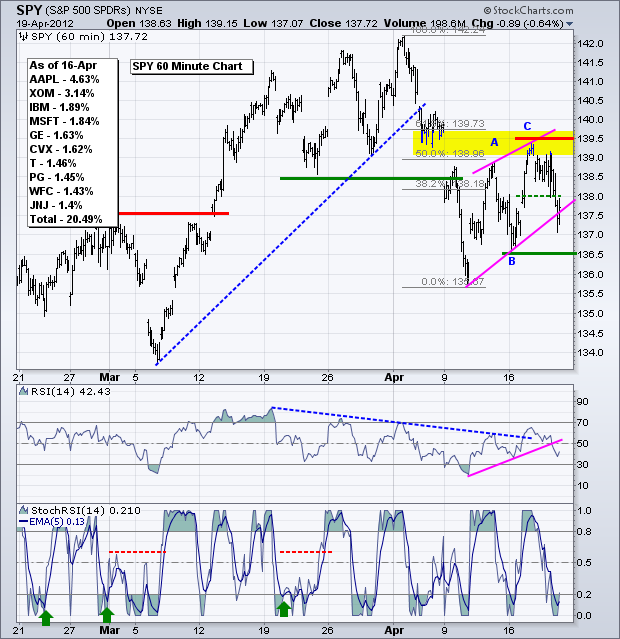Stocks weakened over the last two days as IWM broke its rising flag trendline and SPY tested its rising flag trendline. QQQ remains in a downtrend as Apple continues to weigh. On the 60-minute chart, SPY broke support with a sharp decline in early April to start a short-term downtrend. After becoming oversold, the ETF rebounded with an ABC bounce back to the gap zone (138-139). The ABC pattern and rising flag/wedge formation are typical for bear market rallies. Also note that the ETF retraced 50-61.80% of the prior decline. With the decline the last two days, SPY is testing the lower trendline and RSI broke below its trendline for an early signal.
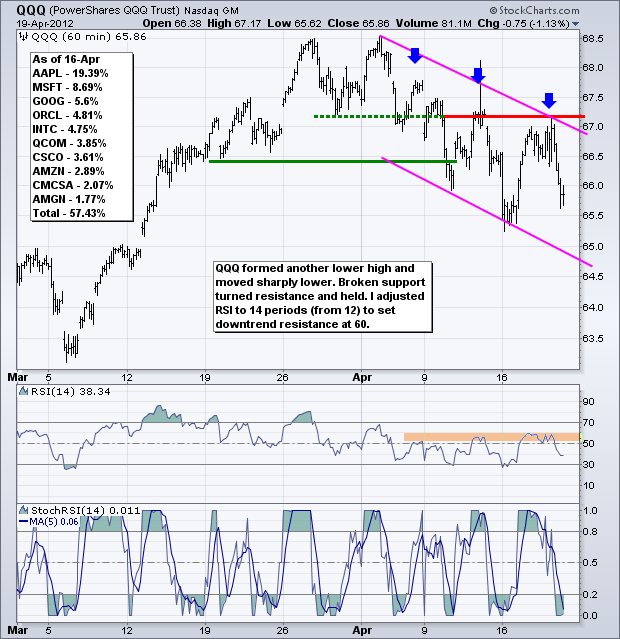
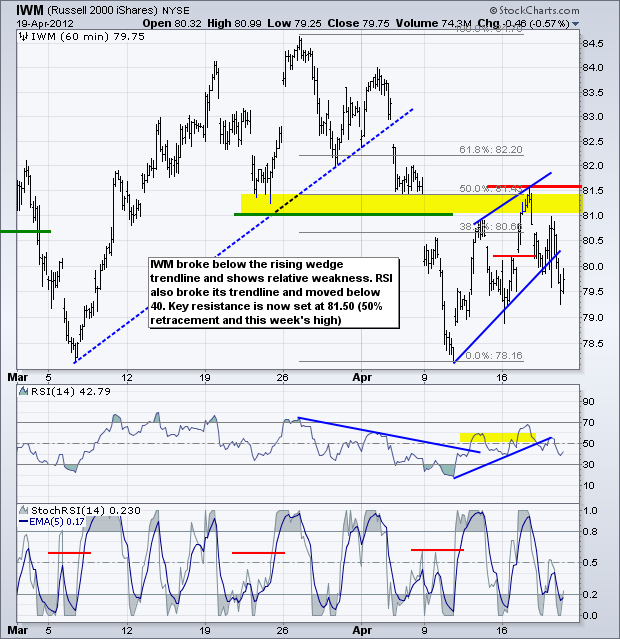
**************************************************************************
The 20+ Year T-Bond ETF (TLT) remains in an uptrend and continues to move counter to the stock market. The channel trendline and this week's low combine to mark the first support zone in the 116-116.50 area. Key support remains at 114.5 for TLT and key resistance is set at 20.70 for the 10-year Treasury Yield ($TNX).
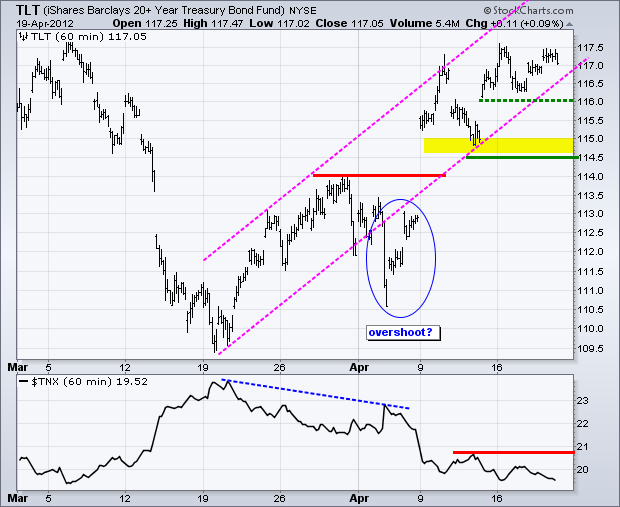
**************************************************************************
The sharp fall in interest rates and suddenly deteriorating employment picture may be putting downward pressure on the Dollar. One would expect the Dollar to rise given renewed focus on Europe, but the Euro is holding rather firm. I remain bullish on the greenback after the early April surge and two week consolidation. However, my patience is wearing thin as this consolidation extends. A triangle has taken shape with support at 22 and resistance at 22.20. Watch these boundaries for the next directional clue.
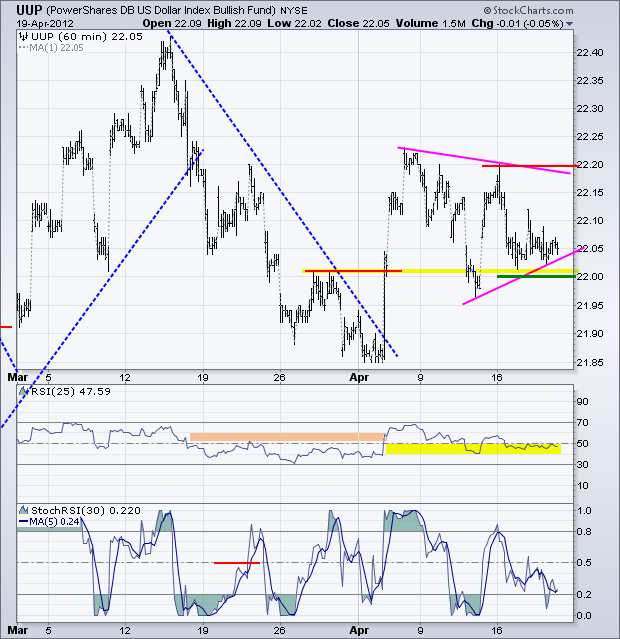
**************************************************************************
The US Oil Fund (USO) remains in a downtrend since late February with resistance in the 40 area. Resistance stems from broken support and the April highs. RSI affirmed resistance at 65. Bullish signals below these levels are be suspect because the bigger downtrend may pull trump. Most recently, the ETF retraced 50-61.80% of its prior decline with a rising wedge and broke the wedge trendline with a sharp decline the last three days.
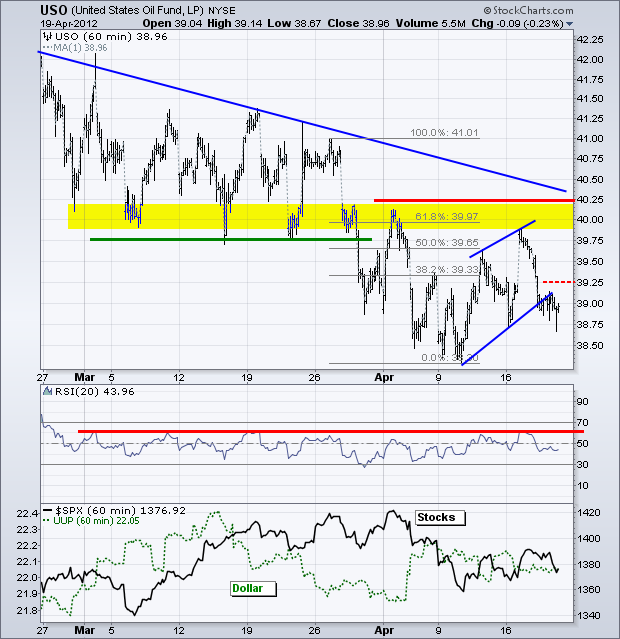
**************************************************************************
The Gold SPDR (GLD) remains in a downtrend with a series of lower lows and lower highs since early March. The most recent decline extended below 160 on Tuesday, but the ETF firmed the last two days. While this firmness is enticing for the bulls, we need to see some sort of breakout before taking firmness seriously. A move above 161 would be the first bullish signal. A move above last week's high is needed to fully reverse the downtrend. I added adaptive RSI to the indicator window. When set at 40 periods, RSI failed at the 50-60 zone with each lower high in GLD. 40-perid RSI, therefore, defines the downtrend in momentum terms. A break above 60 would reverse the downtrend in momentum.
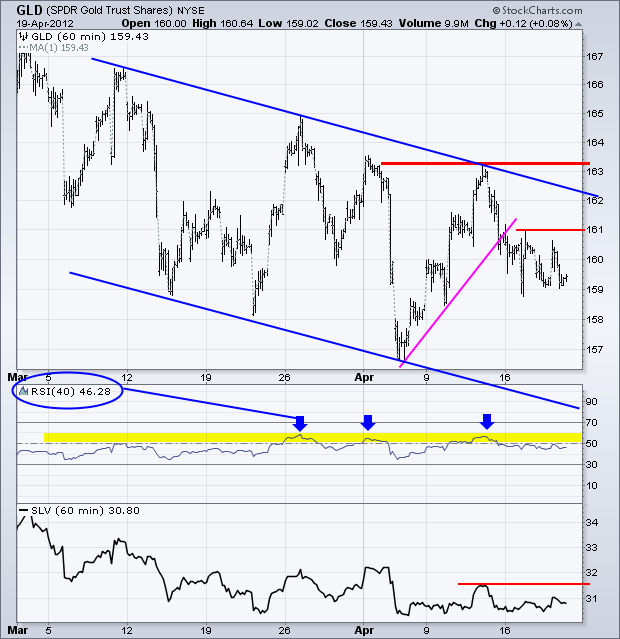
**************************************************************************
Key Economic Reports:
Fri - Apr 20 - 08:30 – No reports. TGIF!
Charts of Interest: Tuesday and Thursday in separate post.
This commentary and charts-of-interest are designed to stimulate thinking. This analysis is not a recommendation to buy, sell, hold or sell short any security (stock ETF or otherwise). We all need to think for ourselves when it comes to trading our own accounts. First, it is the only way to really learn. Second, we are the only ones responsible for our decisions. Think of these charts as food for further analysis. Before making a trade, it is important to have a plan. Plan the trade and trade the plan. Among other things, this includes setting a trigger level, a target area and a stop-loss level. It is also important to plan for three possible price movements: advance, decline or sideways. Have a plan for all three scenarios BEFORE making the trade. Consider possible holding times. And finally, look at overall market conditions and sector/industry performance.

About the author:
Arthur Hill, CMT, is the Chief Technical Strategist at TrendInvestorPro.com. Focusing predominantly on US equities and ETFs, his systematic approach of identifying trend, finding signals within the trend, and setting key price levels has made him an esteemed market technician. Arthur has written articles for numerous financial publications including Barrons and Stocks & Commodities Magazine. In addition to his Chartered Market Technician (CMT) designation, he holds an MBA from the Cass Business School at City University in London.
Learn More
